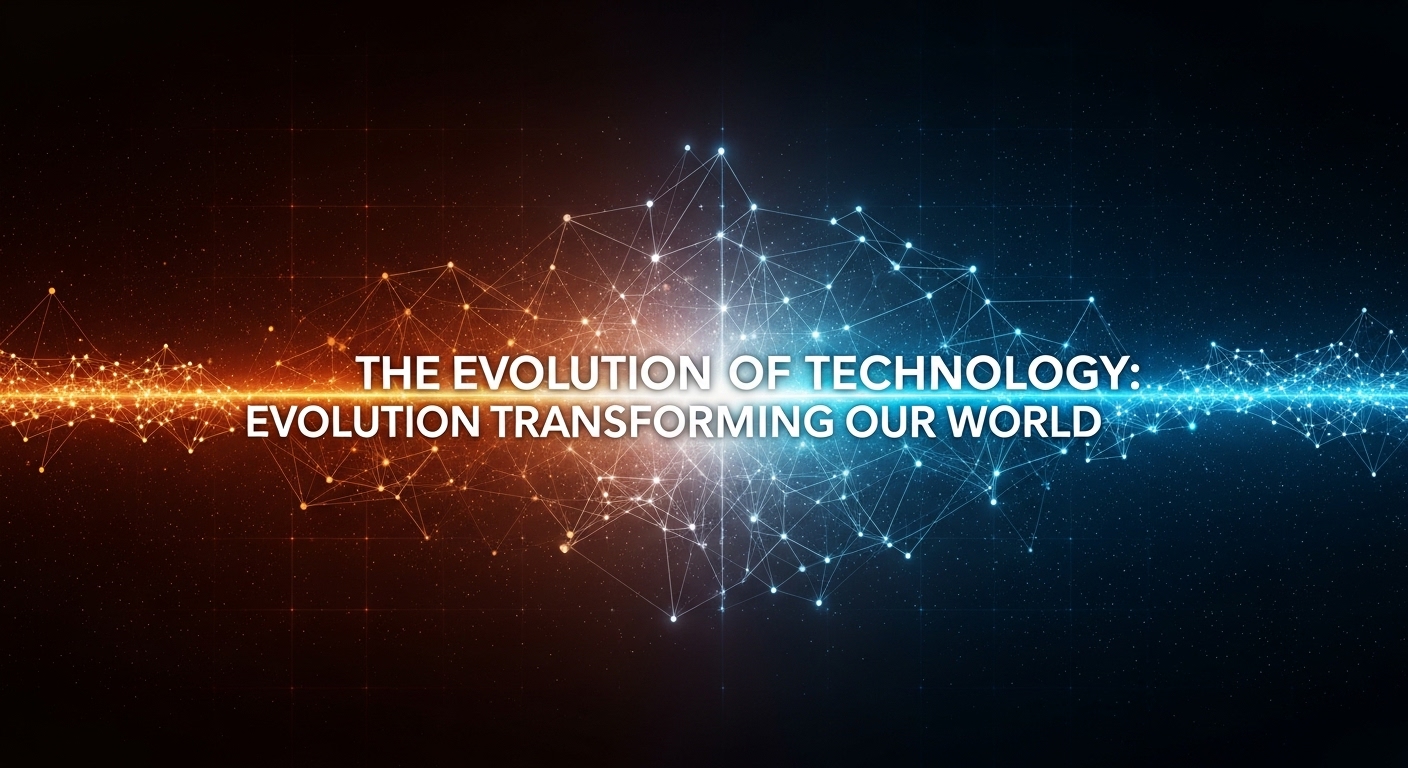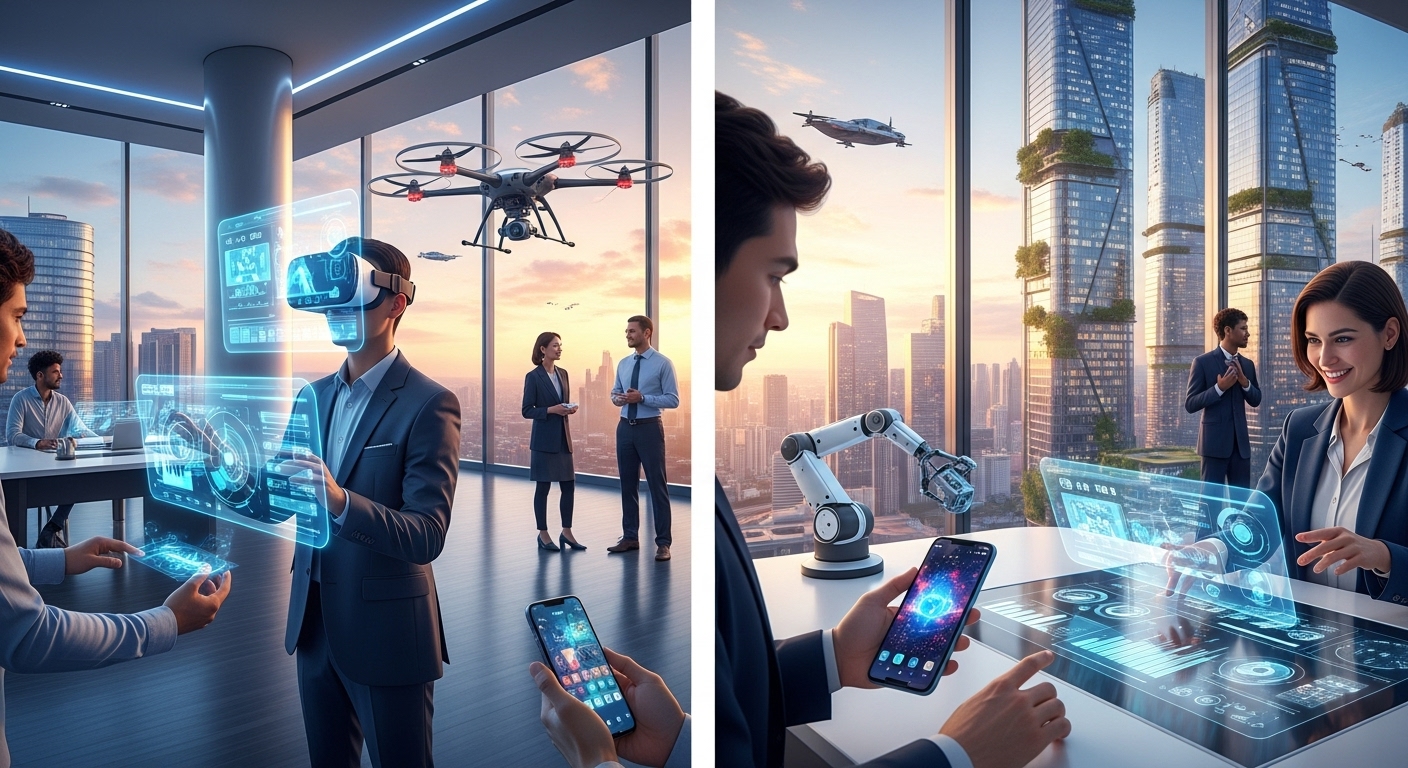Introduction
The rapid evolution of technology is reshaping human life in ways that were once confined to science fiction. From artificial intelligence and robotics to quantum computing and biotechnology, innovation continues to redefine possibilities. Technology is no longer a mere tool; it has become an integral part of daily life, influencing how we communicate, work, learn, and entertain ourselves.
This blog explores the current landscape of technology, its historical evolution, key innovations, societal impact, ethical considerations, and what the future may hold. By examining these areas, we gain a comprehensive understanding of how technology is shaping the modern world.
The Historical Journey of Technology
Human civilization has always advanced alongside technological innovation. Early humans used stone tools, fire, and the wheel to adapt to their environment and improve survival. Agricultural developments such as the plow allowed for the cultivation of crops on a larger scale, fostering community growth and stability.
The Industrial Revolution in the eighteenth and nineteenth centuries marked a seismic shift in technology. Steam engines, mechanized factories, and advancements in metallurgy enhanced production capabilities, transforming economies and societies. Urbanization increased as people moved to cities for work, and industries flourished. This period highlighted technology’s ability to reshape human labor, economy, and society.
In the twentieth century, electricity, telecommunications, and computing revolutionized the world. The telephone, radio, and television enabled mass communication, while early computers facilitated complex calculations and data processing. These innovations set the stage for the digital revolution, paving the way for the interconnected world we experience today.
The Digital Revolution
The digital revolution transformed society by transitioning from analog and mechanical systems to digital computing. Personal computers became widely accessible, democratizing information processing. Software development, operating systems, and programming languages emerged as essential components of technological advancement.
The internet accelerated connectivity, enabling instant communication, global commerce, and access to knowledge. Businesses adapted to e-commerce, online banking, and virtual collaboration. Social networks reshaped personal and professional interactions, creating a globally connected society. Remote work, cloud computing, and digital platforms became integral to daily life, illustrating technology’s ability to redefine societal norms.
Mobile Technology and Smart Devices
Smartphones and connected devices have fundamentally changed the way humans interact with technology. Mobile devices integrate communication, entertainment, productivity, and information access into a single portable tool. Applications allow navigation, social media engagement, remote work, and financial management, providing unprecedented convenience.
Advancements in wireless networks, including 4G and 5G, have increased connectivity, enabling real-time data transfer and streaming. Mobile technology has become a lifeline for individuals and businesses alike, providing global access to services and information that were previously inaccessible.
Artificial Intelligence: Revolutionizing Every Sector
Artificial intelligence has emerged as one of the most transformative technological advancements. AI systems analyze large volumes of data, identify patterns, and make decisions that enhance efficiency and innovation. Machine learning, a subset of AI, allows systems to improve their performance over time through experience and data analysis.
AI has revolutionized industries such as healthcare, finance, transportation, and entertainment. In healthcare, AI supports diagnostics, predictive modeling, and personalized treatment. In finance, AI enables fraud detection, algorithmic trading, and automated customer support. AI-driven systems optimize logistics, energy management, and industrial operations, showcasing its versatility and impact.
Cloud Computing and Big Data
Cloud computing allows individuals and organizations to access computing resources over the internet, reducing the need for local infrastructure. It provides scalable, flexible, and cost-effective solutions for data storage, processing, and collaboration. Cloud platforms support remote work, global teams, and continuous access to digital tools, making them essential in modern society.
Big data analytics complements cloud computing by extracting insights from massive datasets. Businesses use big data to predict trends, optimize operations, and enhance decision-making. In science and healthcare, big data accelerates research, improves predictive modeling, and supports innovative solutions. Together, cloud computing and big data form the backbone of contemporary technological infrastructure.
The Internet of Things
The Internet of Things connects everyday objects to the internet, enabling communication and automation. IoT has transformed homes, industries, and cities. Smart home devices, including thermostats, lighting systems, security cameras, and appliances, enhance convenience, energy efficiency, and safety.
In industrial applications, IoT monitors equipment, predicts maintenance needs, and optimizes production processes. Healthcare uses IoT through wearable devices that track vital signs, support remote monitoring, and improve patient care. IoT represents a move toward intelligent environments that respond dynamically to data, offering efficiency and innovation in both personal and professional life.
Virtual Reality and Augmented Reality
Virtual Reality immerses users in fully digital environments, while Augmented Reality overlays digital content onto the real world. Both technologies are revolutionizing entertainment, education, and professional training.
VR provides immersive gaming experiences, interactive storytelling, and realistic training simulations. AR enhances navigation, product visualization, and industrial design by merging digital and physical spaces. These technologies expand human interaction with digital content, creating new forms of engagement, creativity, and learning.
Robotics and Automation
Robotics has transformed manufacturing, logistics, healthcare, and service industries. Industrial robots perform repetitive, precise tasks, increasing efficiency and reducing human error. Service robots assist in surgery, delivery, cleaning, and customer service, improving productivity and safety.
Automation reshapes labor markets by replacing some tasks while creating opportunities in robot programming, design, and maintenance. Human-robot collaboration optimizes workflows and enhances productivity, demonstrating how technology can complement human skills rather than replace them entirely.
Biotechnology and Healthcare Innovation
Biotechnology has revolutionized healthcare by enabling advancements in gene editing, diagnostics, and personalized medicine. Wearable health monitors and telemedicine improve patient care and accessibility. AI accelerates drug discovery, epidemic tracking, and predictive health modeling, improving both efficiency and outcomes.
Wearable devices monitor heart rate, sleep, and physical activity, promoting preventive care and wellness. Biotechnology innovations extend human longevity, improve treatment effectiveness, and enhance overall healthcare quality.
Cybersecurity and Ethical Technology
With increasing dependence on digital systems, cybersecurity has become paramount. Cyber threats such as hacking, malware, and data breaches endanger individuals and organizations. Security measures like encryption, multi-factor authentication, and monitoring systems protect critical information.
Ethical considerations, including data privacy, responsible AI use, and digital accountability, are crucial. Balancing innovation with ethics ensures that technology serves society responsibly, safeguarding human rights and safety while fostering progress.
Education in the Digital Era
Technology has transformed education, making learning more accessible, interactive, and personalized. Online courses, digital classrooms, and interactive tools enable students to collaborate globally and access diverse learning resources.
Educational technology platforms use AI, VR, and AR to enhance engagement and tailor learning experiences. Coding, data analysis, and technological literacy have become essential skills, preparing students for careers in a digital economy.
Sustainable Technology and Green Innovation
Sustainability has become a core focus of modern technology. Renewable energy, smart grids, and eco-friendly systems reduce environmental impact. Green technology addresses challenges such as climate change, resource scarcity, and pollution.
Electric vehicles, solar and wind power, and sustainable manufacturing demonstrate how technology can provide solutions that balance human development with environmental responsibility. Sustainable innovation ensures long-term benefits while protecting the planet.
Emerging Trends and Future Prospects
The future of technology is filled with potential. Quantum computing promises to solve problems previously considered impossible. Advanced AI will continue to enhance automation, personalization, and predictive analysis. Smart cities will integrate technology to optimize energy use, transportation, and public services.
Human-machine collaboration will define professional and personal life. Ethical governance, inclusivity, and responsible innovation will guide the adoption of emerging technologies. The fusion of creativity, ethics, and advanced systems will shape the next era of human progress.
Conclusion
Technology has evolved from primitive tools to complex systems that touch nearly every aspect of life. Digital computing, AI, IoT, robotics, biotechnology, and sustainable innovations demonstrate the transformative power of human ingenuity.
Technology enhances efficiency, enables new capabilities, and reshapes industries while presenting challenges that require ethical management. Accessibility, sustainability, and responsible practices will determine how technology benefits humanity.
By understanding its history, applications, and potential, society can harness technology to create a connected, intelligent, and sustainable world. Technology is more than a tool; it is a driving force shaping human potential and redefining what is possible.



